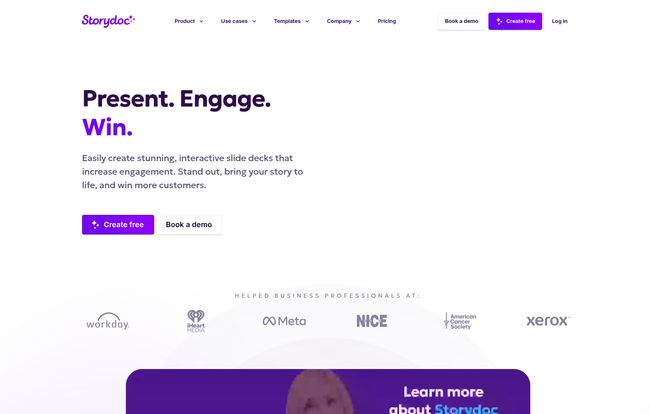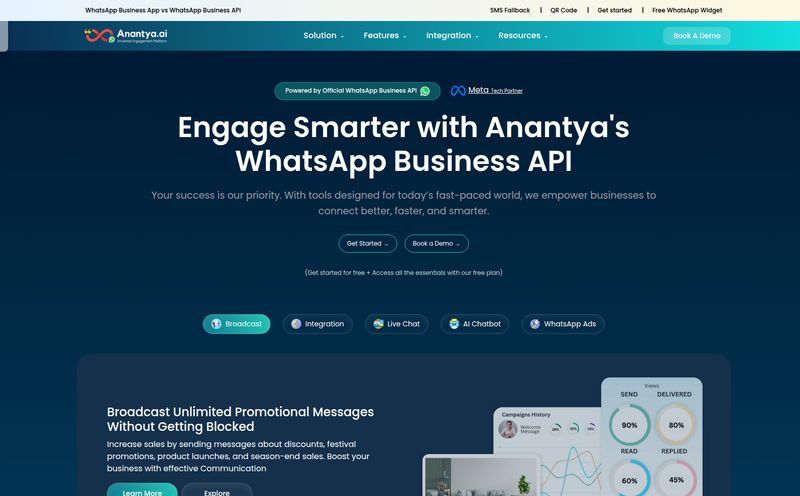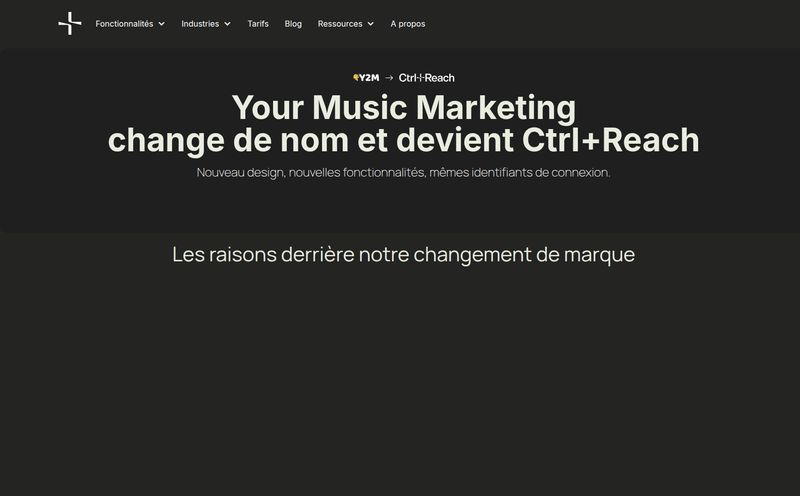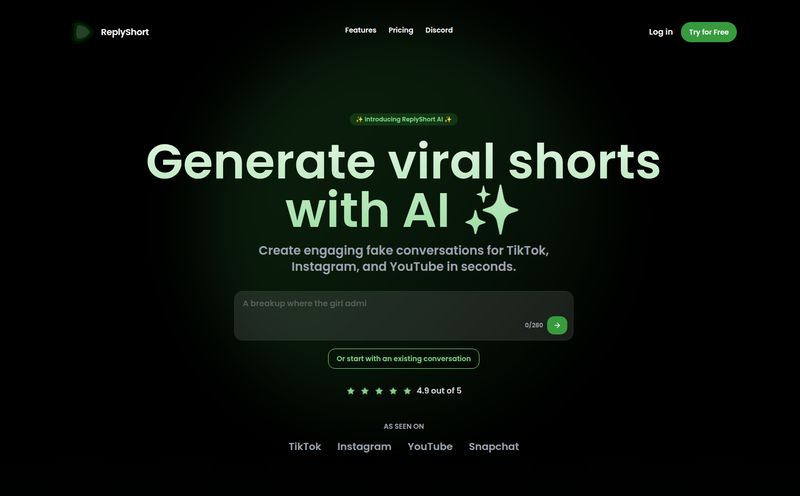We've all been there. You spend days, maybe even a week, perfecting a proposal or a sales deck. You pour your heart and soul into it, making sure every slide is perfect. You attach it to an email as a shiny PDF, hit send, and... nothing. Crickets. You're left staring at your sent folder, wondering if it was even opened. Did they read it? Did they skip to the pricing page? Did it just get lost in the digital abyss? It's like shouting into a void.
For years, this has been the standard operating procedure in sales and marketing. We create these static, lifeless documents and hope for the best. It’s a one-way street of communication. But what if it didn’t have to be? What if your deck could be a conversation, an experience, something that actually tells you what your prospect is thinking?
That's the promise of a tool I’ve been playing around with lately called Storydoc. And I have to say, I'm pretty intrigued. This isn't just another PowerPoint clone. It's a fundamental rethinking of how we present and share information. So, I decided to take a proper look, from the perspective of someone who lives and breathes engagement metrics and traffic generation.
So, What Exactly is Storydoc? (And Why Should You Care?)
At its core, Storydoc is a platform for creating interactive, web-based presentations and sales collateral. Think of it less like a slide deck and more like a mini-website, a self-contained story that your prospect can explore. Instead of sending a flat, downloadable file, you send a link. A simple change, but one with huge implications.
I like to think of it this way: a traditional PDF is a brochure you shove under someone's door. A Storydoc is a guided tour where you get to see which rooms they lingered in and what questions they asked. It moves the whole process from a monologue to a dialogue, even when you're not in the room.
The whole idea is to stop creating documents that just inform, and start creating experiences that persuade. And in the world of SEO and marketing, persuasion is the name of the game.

Visit Storydoc
The Features That Actually Matter for Sales and Marketing
Okay, cool concept. But a tool is only as good as its features. I've seen countless platforms promise the world and deliver a glorified notepad. I dug into Storydoc to see what's under the hood, and a few things really stood out.
Goodbye Static Slides, Hello Interactive Everything
This is the main event. You can embed all sorts of things directly into your slides: videos, Calendly booking forms, interactive charts, and more. This is huge. Instead of saying "feel free to book a meeting," your prospect can literally book the meeting right there in the proposal. It removes friction. And as any good marketer knows, removing friction is how you boost conversions. It transforms a passive reading experience into an active one. That's a big win in my book.
The AI Assistant: Your New Deck-Building Co-pilot
I'm always a little skeptical of AI features. Sometimes they're just gimmicks. Storydoc has an AI assistant that helps generate decks. The company claims it's 10x faster. I'd say that depends on your starting point, but it's definately a massive time-saver for creating that first draft. It pulls together a solid structure and good starting content, which you can then edit and bring to perfection. It won't replace a skilled salesperson's touch, but it demolishes the 'blank page' problem and gets you 70% of the way there in minutes. For teams that need to produce high-quality collateral at scale, thats a big deal.
Real-Time Analytics That Aren’t Just Vanity Metrics
This, for me, is the killer feature. Once you send that Storydoc link, you get a flood of data. You can see:
- Who opened the deck (and when).
- How much time they spent on each slide.
- What they clicked on.
- If they shared it with anyone else.
This is gold. Pure, actionable gold. Imagine following up with a prospect and saying, "I saw you spent a lot of time on the case study slide for Company X, did you have any questions about how we handled their integration?" It's a complete game-changer. It turns a cold follow-up into a highly relevant, warm conversation. The claim of +28% more meetings suddenly seems very, very plausible.
Playing Nice with Your Existing Tools
Nobody wants another tool that lives on an island. Storydoc seems to get this. It integrates with the big players—HubSpot, Salesforce, Zapier, Calendly, and more. This means the valuable data you're collecting doesn't just sit in Storydoc; it can flow right into your CRM, triggering workflows and enriching your contact records. This is crucial for making it a seamless part of your sales or marketing stack, not just another thing to log into.
Let's Talk Money: Storydoc Pricing Breakdown
Alright, the all-important question: what's it going to cost? The pricing seems pretty straightforward and targeted at different user types. Here's how it breaks down based on their site:
| Plan | Price (Billed Annually) | Ideal For |
|---|---|---|
| Starter | $12 per user/month | Professional individuals or freelancers. |
| Pro | $36 per user/month | Businesses and teams needing more features like advanced analytics and branding. |
| Team | Contact for pricing | Larger organizations needing a full, customized solution with top-tier support. |
Is it worth it? In my opinion, you have to frame it as an investment, not an expense. If the increased engagement and analytics from a single Pro plan ($432/year) helps you close just one extra deal, it has likely paid for itself several times over. For a solo freelancer, the Starter plan is a pretty accessible way to seriously upgrade your proposals. The price might be a barrier for those with absolutely no budget, but for any serious business, the potential ROI seems pretty clear.
The Good, The Bad, and The Honest Truth
No tool is perfect. After spending some time with it, here's my unfiltered take.
On the plus side, the engagement factor is undeniable. Sending a Storydoc just feels more professional and modern than a PDF. The time saved with templates and AI is a very real benefit, especially for busy teams. And as I've already hammered home, the analytics are the real star of the show, providing insights that can directly lead to more effective follow-ups and, ultimately, more revenue.
However, there are things to keep in mind. There can be a bit of a learning curve. It’s not as dead-simple as PowerPoint because it's fundamentally more powerful. You have to think differently about how you structure your narrative. Also, its power is truly unlocked when you connect it to your other tools. If you’re not using a CRM, you'll still get benefits, but you'll miss out on some of the workflow magic. And yes, the cost, while justifiable for many, will put it out of reach for some users who are just looking for a free, basic solution.
Is Storydoc the Final Nail in the PDF's Coffin?
So, is the PDF dead? Probably not. It will stick around for things like contracts, technical manuals, and simple, printable documents. It serves a purpose.
But for persuasion? For selling an idea, a product, or a service? I believe its days are numbered. The future of sales and marketing collateral is interactive, it's data-driven, and it's built around the customer experience. Tools like Storydoc are leading that charge.
It represents a mental shift from just “sending a file” to “creating an experience.” For years, we've obsessed over optimizing every pixel of our landing pages for engagement. Why on earth have we been content to send our most important proposals out as dead, untrackable documents? It just doesn’t make sense anymore. Not when there’s a better way.
Your Storydoc Questions, Answered
What is the best way to get started with Storydoc?
Based on their site, the easiest way in is to pick one of their ready-made templates. They have them for sales pitches, proposals, case studies, and more. This lets you see how a great interactive deck is structured and you can just replace the content with your own.
Can I use my own branding on the decks?
Yes. The Pro and Team plans offer advanced branding options, allowing you to use your own colors, fonts, and logos to make sure everything is perfectly on-brand. The Starter plan has more limited branding capabilities.
Is my data safe with Storydoc?
They take security seriously. The platform is listed as GDPR compliant and Secure SEO, with options for things like password protection and access control. As always, for highly sensitive information, you should review any platform's security policies in detail.
How is Storydoc different from PowerPoint or Google Slides?
The key difference is static vs. interactive. PowerPoint and Google Slides are designed to create linear, static presentations, usually for a live presenter. Storydoc is designed to create non-linear, interactive web experiences that a prospect can explore on their own time, all while you collect data on their engagement.
What happens if I use a free plan template, can I replace it?
Their model seems to revolve around paid plans, but some platforms offer template swaps. It's best to check their current policy, but generally, paid plans unlock the full library and flexibility.
The Final Verdict
So, what's the bottom line? Storydoc is a seriously impressive tool that delivers on its core promise: making your presentations more engaging and insightful. It's not just a fancy slide maker; it's a smart sales and marketing tool that can provide a real competitive edge.
If you're still attaching PDFs to your emails and praying for a response, I think you owe it to yourself to check it out. It's an investment in better communication, better data, and ultimately, better results. The world is moving away from static content, and in my opinion, it's high time our sales decks caught up.



